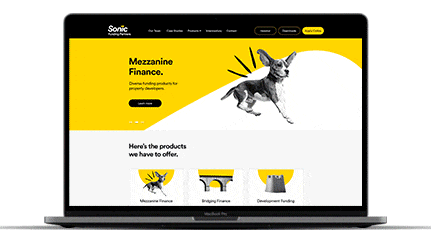Top Tips for Producing an Impactful Site Layout That Transforms
To accomplish this, one must consider a selection of aspects, consisting of recognizing the target audience, focusing on individual experience, and optimizing for mobile systems. The calculated use of compelling call-to-actions and a distinct visual pecking order plays an important role in guiding customers with their journey.

Understand Your Target Market
Recognizing your target audience is basic to effective site design, as it prepares for developing an appealing customer experience. Recognizing who your customers are, including their demographics, choices, and behaviors, makes it possible for designers to customize the site's content, format, and performance to meet certain needs.
Performing extensive marketing research is critical in this process. Studies, meetings, and analytics can provide beneficial insights right into user assumptions and discomfort points. By assembling this data, developers can produce customer personalities that represent different sections of the target market, guaranteeing that layout decisions are notified and relevant.
Furthermore, recognizing the target audience aids in selecting ideal design aspects such as shade schemes, typography, and imagery that resonate with users. An internet site that speaks directly to its target market cultivates a feeling of link and trust, urging longer check outs and greater conversion prices.
Ultimately, a user-centered method to web site layout not only enhances individual satisfaction but likewise supports service purposes by driving involvement and commitment. By prioritizing the requirements and choices of the target market, a website can effectively serve its purpose and achieve desired results.
Prioritize Individual Experience
To improve the total performance of a website, focusing on customer experience (UX) is essential (Website Design). A well-designed UX ensures that visitors can browse the site effortlessly, find information rapidly, and engage with content meaningfully. This leads to increased user satisfaction and higher conversion rates
Begin by implementing instinctive navigating. Menus needs to be practically structured, permitting individuals to locate key locations of the website with marginal effort. Consistency in layout components, such as color pattern and fonts, cultivates experience, which is vital for keeping individual involvement.
In addition, take into consideration the filling rate of your internet site. A delay of simply a couple of seconds can lead to considerable drop-offs, as individuals are less most likely to wait for a slow-loading web page. Enhancing images and maximizing code can improve performance and retain site visitors.
By prioritizing user experience, you not only produce an extra delightful environment for visitors however likewise enhance your brand name's credibility. Inevitably, a focus on UX is an investment advice in the long-lasting success of your web site.
Maximize for Mobile Instruments
Optimizing for mobile phones is important in today's digital landscape, where a boosting variety of customers accessibility internet sites via smartphones and tablet computers. A mobile-friendly layout not just boosts customer experience yet also plays a significant function in improving internet search engine positions. To accomplish this, it is important to take on a receptive layout that automatically gets used to different screen sizes and orientations.

Packing speed is an additional vital aspect; mobile users are typically much less individual and expect rapid access to information. Maximize pictures and leverage internet browser caching to enhance performance. Ultimately, test your website on numerous devices and display resolutions to identify and fix any type of potential use issues. By focusing on mobile optimization, you guarantee that your internet site remains affordable and efficiently involves a broader target market.
Usage Engaging Call-to-Actions
An internet site's efficiency commonly hinges on its capability to assist site visitors towards preferred activities, making engaging call-to-actions (CTAs) essential elements of layout. CTAs offer as the pivotal points that guide customers to involve with the website, whether that means making a purchase, enrolling in a newsletter, or downloading a resource.
To create effective CTAs, clarity is paramount. Usage succinct language that clearly communicates the action you desire the individual to take.
Furthermore, consider making use of directional cues, such as arrowheads or pictures, to direct customers towards these buttons. By concentrating on these elements, organizations can substantially enhance customer engagement, driving conversions and inevitably accomplishing their site's objectives.
Focus on Visual Hierarchy
Efficient website layout relies greatly on a well-structured aesthetic pecking order that overviews users via web content perfectly. read what he said By arranging aspects in a fashion that prioritizes details, designers can improve customer experience and help with decision-making. This entails utilizing dimension, color, comparison, and spacing strategically to accentuate one of the most essential parts of a webpage.
The usage of bigger font styles for headings and subheadings establishes a clear difference in between various areas, allowing users to scan content effortlessly. Furthermore, utilizing different shades for switches and calls-to-action can capture user focus and encourage communication. Whitespace is another crucial part; it stops clutter and makes it possible for users to concentrate on essential messages without diversions.
Images and graphics must complement the text while additionally sticking to the recognized power structure, reinforcing the overall message (Website Design). Consistency in design aspects, such as color pattern and typography, more enhances the aesthetic power structure, making navigating instinctive

Conclusion
Finally, reliable internet site design necessitates a comprehensive understanding of the target audience, prioritization of individual experience, and mobile optimization. The critical use compelling call-to-actions and a distinct visual hierarchy even more improves customer engagement. By carrying out these principles, websites can achieve greater conversion rates, ensuring that design elements not only draw in site visitors yet also help with smooth navigating and communication. Ultimately, a well-executed web site layout functions as a vital component in driving user activities and achieving business goals.